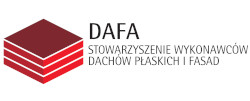Load bearing capacity in compression perpendicular to the grain in timber frame buildings
dr inż. Marek Węglorz, Politechnika Śląska; Wydział Budownictwa
ORCID: 0000-0001-7534-3639
dr inż. Janusz Brol, Politechnika Śląska; Wydział Budownictwa
ORCID: 0000-0001-7413-1191
prof. dr hab. inż. Jan Kubica, Politechnika Śląska; Wydział Budownictwa
ORCID: 0000-0003-3905-202X
mgr inż. Rafał Hadera, Wood Core House Sp. z o.o.
Adres do korespondencji: Ten adres pocztowy jest chroniony przed spamowaniem. Aby go zobaczyć, konieczne jest włączenie w przeglądarce obsługi JavaScript.
DOI: 10.15199/33.2020.11.02
Oryginalny artykuł naukowy
Streszczenie. Podczas badań laboratoryjnych uzyskano mniejsze naprężenie dopuszczalne przy ściskaniu w poprzek włókien (docisku) wyznaczone na modelach rzeczywistych, niż wynikałoby to z obliczeń zgodnie z zaleceniami PN-EN 1995-1-1:2010. Dotyczy to wszystkich budynków szkieletowych, w których wykorzystywane jest drewno świerkowe (Picea Abies). Zaobserwowano także odmienny sposób zniszczenia z uwagi na docisk, niż wynika to z założeń normy, co do powierzchni współpracującej w przenoszeniu obciążeń ze słupków ściany na elementy podwalinowe.
Słowa kluczowe: drewniany budynek szkieletowy; panele ścienne; ściskanie w poprzek włókien; wytrzymałość na docisk.
Abstract. The lower values of the allowable compressive stresses in direction perpendicular to the grains (bearing strength of wood) have bean obtained in the experimental tests on the real models ehan obtained theoretically in accordance with the PN-EN 1995- 1-1:2010. This issue applies to all types of timber frame buildings where spruce wood (Picea Abies) is used. Different modes of failure due to compression perpendicular to the grain than it results from the assumptions of the standard, especially when taking into account the surface cooperating in the transfer of loads from the wall posts to the sill plates was also observed.
Keywords: timber frame building; wall panels; compression perpendicular to the grain, bearing strength.
Literatura
[1] Blass Hans J., Rainer Görlacher. 2004. Compression perpendicular to the grain. Proceedings of the 8th World Conference of Timber Engineering 2: 435–440.
[2] Brol Janusz, Jan Kubica, Marek Węglorz. 2020. „The problem of compressive strength in direction perpendicular to the grains on example of tests of the load-bearing capacity of the continuously supported timber-frame sill plates”. Materials 13 (5): 1 – 14. DOI 10.3390/ma13051160.
[3] Larsen Hans J., Adrian J. M. Leijten, Thomas A. C.M.Van der Put. 2011. The design rules in Eurocode 5 for compression perpendicular to the grain – Continuous supported beams. Danish Timber Information, CIB-W18: Timber Structure: 1 – 43.
[4] Leijten Adrian J. M. 2016. The bearing strength capacity prediction by Eurocode 5 and other potential design code models. Proceedings of theWorld Conference on Timber Engineering (WCTE 2016), 22-25 August 2016, Vienna University of Technology, Vienna, Austria: 1-8.
[5] Madsen Borg, Adrian J. M. Leijten, Ernst Gehri, Adrian Mischler, Andre Jorissen. 2000. Behaviour of Timber Connections. Timber Engineering Ltd., Vancouver, Canada.
[6] PN-EN 1995-1-1:2010 Eurokod 5. Projektowanie konstrukcji drewnianych. Część 1-1: Postanowienia ogólne – Reguły ogólne i reguły dotyczące budynków.
[7] PN-EN 408:2010 Timber structures. Structural timber and glued laminated timber. Determination of some physical and mechanical properties. Determination of bursting strength.
[8] Van der Put Thomas A. C. M. 2008. „Derivation of the bearing strength perpendicular to grain of locally loaded timber blocks”. Holzals Roh- - und Werkstoff 66 (6): 409 – 417.
Przyjęto do druku: 29.10.2020 r.
Materiały Budowlane 11/2020, strona 18-20 (spis treści >>)





























